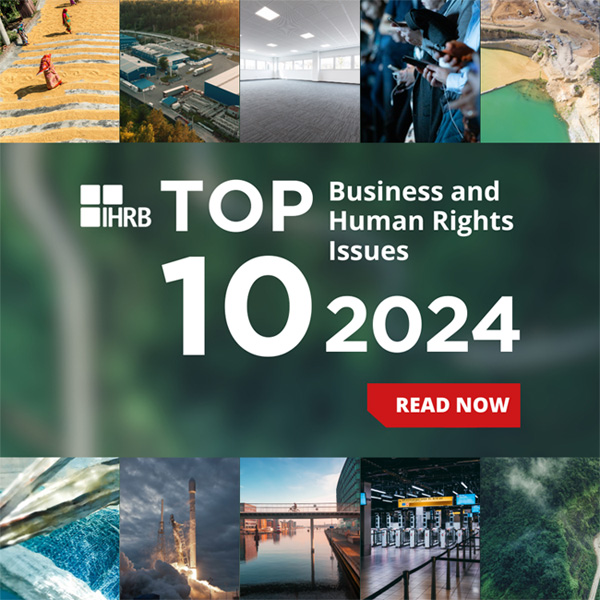Last week, representatives from nearly 200 countries adopted a draft text on combating climate change, an important step toward a new global treaty world leaders hope to agree in Paris this December.
The 86-page text agreed in Geneva contains a dizzying range of perspectives and options governments will need to reconcile as negotiations continue over the coming months. But some commentators suggest the real story to watch is how a new and more flexible approach to reaching a UN climate agreement is emerging.
What exactly are climate change negotiators seeking to do differently this time around and how might it inform another inter-governmental process that will get underway at the UN in July this year – on a potential international legal instrument on business and human rights?
As one former U.S. climate negotiator has explained past efforts:
“Smart people in the 20th century thought we could tackle climate change with a treaty in which the world’s nations agreed to ‘targets and timetables’ for reducing emissions. These reductions would be implemented by top-down, national mandates and government support for clean energy technologies. But 22 years after the original climate agreement, emissions continue to rise and threats of significant harm loom larger.”
Observers of the current climate negotiations see governments developing a “bottom up” strategy, based largely on national commitments to climate action, in contrast with more traditional “top down” approaches, which seek consensus on a single, integrated and legally binding agreement applied equally to all parties. Experts suggest this shift to what some scholars refer to as a “regime complex” or a “polycentric” system of governance reflects today’s reality in which power is more diffuse, with states less likely to find common ground on global agreements.
Could the unfolding approach being pursued by climate negotiators inform the work ahead for the mandate established by the UN Human Rights Council in 2014 to “regulate, in international human rights law, the activities of transnational corporations and other business enterprises...”?
First, it is important to acknowledge clear differences amongst governments on how or even whether to address business involvement in human rights abuses through new international legal mechanisms. Recall that the 2014 proposal to begin negotiations on a new business and human rights treaty resulted in a divisive vote, with 20 governments in favour of the resolution, 14 against and 13 abstaining. A new treaty shouldn’t be about renegotiating human rights standards already binding on states. The challenge instead is to address the question of what existing obligations mean in relation to business activities around the world, to identify gaps in protection where they exist, and seek to fill them.
When the UN Human Rights Council unanimously approved the Guiding Principles on Business and Human Rights in 2011, governments acknowledged, as the commentary to Guiding Principle 1 notes, that:
“States may breach their international human rights law obligations where…they fail to take appropriate steps to prevent, investigate, punish and redress private actors’ abuse. While States generally have discretion in deciding upon these steps, they should consider the full range of permissible preventative and remedial measures, including policies, legislation, regulations and adjudication.” (Emphasis added.)
Could supporters of a new legal instrument on business and human rights find greater willingness to engage on the part of opposing and abstaining governments if they express openness from the start that different governments could go about addressing business related rights abuses based in part on their own circumstances and consistent with the Guiding Principles? Doing so obviously wouldn’t guarantee success, but would indicate a desire to test a range of approaches to achieving positive results in different operating contexts, for different industry sectors and addressing different rights issues.
Second, as in the case of climate negotiations, critics rightly express concern that multiple state commitments in any broad treaty framework could produce “policy chaos due to fragmentation and conflicts in laws.” Others ask how best to ensure ambitious state commitments and effective follow up that rise to the threats posed by climate change or other governance challenges. Part of the answer lies in ensuring scope for active engagement for those outside formal negotiations. For example, in the context of ongoing climate negotiations, members of the B-Team recently called on governments to commit to a global goal for the COP21 Paris agreement of net-zero greenhouse-gas emissions by 2050 and pledged to match the ambition themselves for their companies and other private sector actors.
How could governments in the context of negotiations on a new business and human rights treaty similarly find ways for companies and other actors to help set high but achievable bars for state actions as well as expectations for corporate performance on issues such as public reporting and other aspects of corporate due diligence? A “bottom up” approach to negotiations on human rights challenges would need to make space for a wide range of stakeholder voices to be heard and would put the onus on companies themselves to state publicly what they would expect of governments and what they would want an agreement to include concerning business performance.
A third and final point concerns the critical issue of accountability. Climate negotiators know that along with diverse commitments from states must come robust reporting and peer review mechanisms as well as other accountability mechanisms. These will be critical if commitments made in Paris are to be more than paper promises. So too, the UN Guiding Principles stress the importance of preventive corporate due diligence as well as judicial and non-judicial remedies where abuses occur. Again, the Guiding Principles point out that remedies “may take a range of substantive forms the aim of which, generally speaking, will be to counteract or make good any human rights harms that have occurred.” (Emphasis added.)
All of these points reinforce the fact that the UN Guiding Principles offer a framework for a “bottom up” strategy to advance legalization on business and human rights that in some ways parallels efforts currently being pursued by climate negotiators on the road to Paris. The potential need for unified binding commitments that reinforce policy coherence and apply equally to all countries may well be necessary on some aspects of the broad business and human rights agenda and shouldn’t be discounted at this early stage. But as discussions concerning the potential for a new legal instrument get underway in just a few months, all involved would be well advised to remember the lessons of the past two decades of climate negotiations, where climate dangers continued to grow even as inter-governmental talks languished.





























How should businesses respond to an age of conflict and uncertainty?
As 2024 began, European Commission President Ursula von der Leyen aptly summed up our deeply worrying collective moment. As she put it, speaking at the annual World Economic Forum in Switzerland, we are moving through “an era of conflict and...
26 March 2024 | Commentary
Commentary by Scott Jerbi, Senior Advisor, Policy & Outreach, IHRB